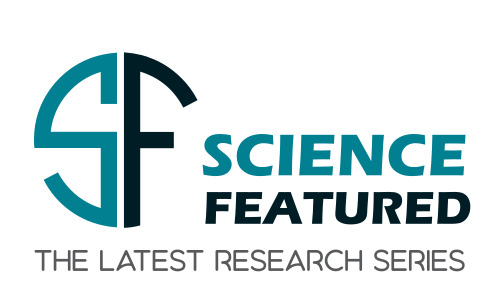Schematic overview of preclinical data from Ze 339. (Details at the end of the article)
More and more people around the world are dealing with allergic rhinitis, a condition that causes sneezing, stuffy nose, and itchy eyes. Experts say this is partly due to changes in the environment and how people live today. Traditional allergy medications like antihistamines are helpful but can make people feel sleepy. That’s why many are turning to natural remedies. One of the most promising is a plant called butterbur, and a special extract from its leaves, known as Ze 339, is now showing strong results in relieving allergy symptoms safely.
Researchers Dr. Verena Merk, Dr. Georg Boonen, Professor Veronika Butterweck, and Dr. Andreas Schapowal, from Max Zeller Söhne AG and the Swiss Medical Society for Phytotherapy, looked closely at how Ze 339 works for allergy relief. Their detailed report, shared in the medical journal Advances in Respiratory Medicine, brings together findings from lab tests, clinical trials which are carefully controlled studies with volunteer patients, and real-life patient use to paint a clear picture of how this herbal medicine performs.
People using Ze 339 in studies saw the same kind of symptom relief as those using common allergy drugs. Sneezing, runny nose, and blocked nasal passages all improved after use. What stood out was that Ze 339 didn’t cause drowsiness, a common issue with many allergy medicines. In fact, in some studies, Ze 339 helped clear the nose much faster than standard drugs.
Dr. Schapowal explained that Ze 339 doesn’t work the same way as typical allergy medicines. Instead of blocking histamine in the body, a chemical released during allergic reactions, it helps calm the release of substances that cause swelling and discomfort. These include leukotrienes and cytokines, which are small proteins that signal inflammation in the body. Ze 339 reduces early symptoms by helping prevent the release of certain chemicals from immune cells, rather than acting like traditional antihistamines. This dual approach helps both the quick and delayed allergy symptoms.
Dr. Schapowal also pointed out how useful this herbal extract can be for regular use. “Ze 339 not only gives relief without making people sleepy, but it also continues to work well over time,” he said. Information from everyday users—people taking the product outside of clinical trials—backs this up. Patients of all ages, including those with asthma or skin problems, reported feeling better with few side effects. Most of the side effects were mild, such as slight stomach discomfort, and did not stop people from using the product.
Clear patterns from the research show that Ze 339 is a safe and reliable choice for those dealing with both types of allergic rhinitis—seasonal, which occurs during pollen seasons, and year-round, often triggered by indoor allergens. The report underlines that natural remedies like Ze 339 deserve a place alongside standard allergy treatments, especially when they offer fewer side effects. Because it doesn’t interact badly with other medicines, it’s a good option for many people. Researchers also suggested it might help with other allergy-related conditions such as asthma, a condition that narrows the airways, or eczema, a skin condition that causes inflammation, although more studies will be needed.
Recent hints show Ze 339 might also help fight viruses, giving it potential use beyond allergies. Since it’s already approved for use in several countries, adding new uses could be quicker and easier than starting from scratch with a new medicine. With its proven results, mild side effects, and unique way of working, Ze 339 could become a popular natural option for allergy sufferers everywhere.
Journal Reference
Merk, V.M., Boonen, G., Butterweck, V., Schapowal, A. “Efficacy and Safety of P. hybridus Leaf Extract Ze 339 for the Treatment of Allergic Rhinitis.” Advances in Respiratory Medicine, 2025; 93, 13. DOI: https://doi.org/10.3390/arm93030013
Legend of the Featured Image
(1.) Treatment of primary human leukocytes with Ze 339 led to decreased anti-IgE or complement C5a-stimulated LTC4 synthesis. (2.) GM-CSF-priming and complement C5a or PAF stimulation of eosinophils and neutrophils led to the synthesis of cysteinyl LTs and LTB4 which was inhibited by Ze 339. Furthermore, treatment of stimulated eosinophils with petasin reduced the release of ECP. (3.) The treatment with Ze 339 resulted in decreased neutrophil migration towards HNEC supernatant. (4.) Ze 339 inhibited cytokine-induced JAK/STAT signalling. (5.) Treatment of stimulated eosinophils with petasin resulted in reduced intracellular Ca2+, reduced cPLA2 activity and reduced 5-LO activity. (6.) Ze 339 application reduced histamine, cysteinyl LTs and LTB4 concentration in nasal fluids of patients. Abbreviations: AA: Arachidonic acid; anti-IgE: anti-immunoglobulin E antibody; complement C5a: complement component 5a; cPLA2: cytosolic phospholipase A2; cysteinyl LTs: cysteinyl leukotrienes; ECP: eosinophil cationic protein; GM-CSF: granulocyte–macrophage colony-stimulating factor; HNEC: human nasal epithelial cells; IL: interleukin; JAK: Janus kinases; LTB4: leukotriene B4; LTC4: leukotriene C4; PAF: platelet activating factor; PL: phospholipids; STAT: signal-transducer and activator of transcription protein; 5-LO: 5-lipoxygenase. The figure was created with Biorender.com.
About the Author

Dr. Andreas Georg Schapowal, MD, PhD, DSc (hon), is a distinguished physician and academic recognized for his contributions to otolaryngology, allergology, and clinical immunology. Born in Berlin in 1956, he studied medicine and philosophy at Heidelberg University, where he earned his medical degree in 1982. He later completed a PhD at Hanover Medical College, focusing on the anti-allergic effects of butterbur extract, and was awarded an honorary Doctor of Science from Eckerd College in 2004. Dr. Schapowal’s career spans senior positions in hospitals in Germany and Switzerland, including leadership roles in ENT departments and high mountain clinics. From 1998 to 2024, he ran a private practice in Landquart, Switzerland, while also serving as a consultant in psychiatric services. A prolific lecturer, editor, and author of five books and numerous scientific articles, he has received multiple honors for his medical and humanitarian contributions.














































